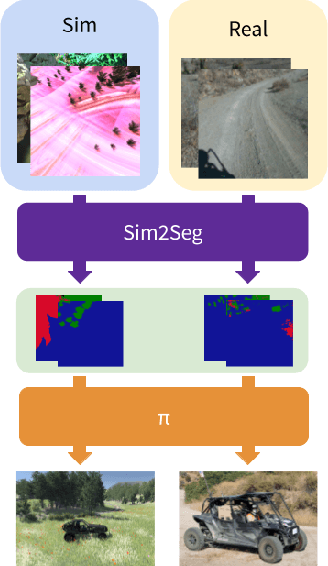John So
Any-point Trajectory Modeling for Policy Learning
Dec 28, 2023



Abstract:Learning from demonstration is a powerful method for teaching robots new skills, and more demonstration data often improves policy learning. However, the high cost of collecting demonstration data is a significant bottleneck. Videos, as a rich data source, contain knowledge of behaviors, physics, and semantics, but extracting control-specific information from them is challenging due to the lack of action labels. In this work, we introduce a novel framework, Any-point Trajectory Modeling (ATM), that utilizes video demonstrations by pre-training a trajectory model to predict future trajectories of arbitrary points within a video frame. Once trained, these trajectories provide detailed control guidance, enabling the learning of robust visuomotor policies with minimal action-labeled data. Our method's effectiveness is demonstrated across 130 simulation tasks, focusing on language-conditioned manipulation tasks. Visualizations and code are available at: \url{https://xingyu-lin.github.io/atm}.
SpawnNet: Learning Generalizable Visuomotor Skills from Pre-trained Networks
Jul 07, 2023



Abstract:The existing internet-scale image and video datasets cover a wide range of everyday objects and tasks, bringing the potential of learning policies that have broad generalization. Prior works have explored visual pre-training with different self-supervised objectives, but the generalization capabilities of the learned policies remain relatively unknown. In this work, we take the first step towards this challenge, focusing on how pre-trained representations can help the generalization of the learned policies. We first identify the key bottleneck in using a frozen pre-trained visual backbone for policy learning. We then propose SpawnNet, a novel two-stream architecture that learns to fuse pre-trained multi-layer representations into a separate network to learn a robust policy. Through extensive simulated and real experiments, we demonstrate significantly better categorical generalization compared to prior approaches in imitation learning settings.
Sim-to-Real via Sim-to-Seg: End-to-end Off-road Autonomous Driving Without Real Data
Oct 25, 2022



Abstract:Autonomous driving is complex, requiring sophisticated 3D scene understanding, localization, mapping, and control. Rather than explicitly modelling and fusing each of these components, we instead consider an end-to-end approach via reinforcement learning (RL). However, collecting exploration driving data in the real world is impractical and dangerous. While training in simulation and deploying visual sim-to-real techniques has worked well for robot manipulation, deploying beyond controlled workspace viewpoints remains a challenge. In this paper, we address this challenge by presenting Sim2Seg, a re-imagining of RCAN that crosses the visual reality gap for off-road autonomous driving, without using any real-world data. This is done by learning to translate randomized simulation images into simulated segmentation and depth maps, subsequently enabling real-world images to also be translated. This allows us to train an end-to-end RL policy in simulation, and directly deploy in the real-world. Our approach, which can be trained in 48 hours on 1 GPU, can perform equally as well as a classical perception and control stack that took thousands of engineering hours over several months to build. We hope this work motivates future end-to-end autonomous driving research.
 Add to Chrome
Add to Chrome Add to Firefox
Add to Firefox Add to Edge
Add to Edge